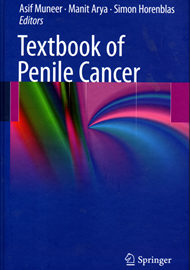This is already a firm favourite amongst that cohort of trainees who sit the FRCS(Urol) – an exam, which does not discriminate between those wishing a career in andrology and those who do not. Everyone will need to learn and understand the contents of this book. My advice? Ditch the chapter in Campbell’s and read this instead.
Whilst the terminology surrounding this area can appear confusing (and the pathology conflicting) this book goes further than any other text I know to make the subject matter accessible. Reading this book will be the best investment in time and money you will have made in an eon.
The major strengths of the book relate to diagnosis and assessment and in this respect would appeal to any individual with a general urological practice who is often presented with a bewildering array of appearances – the underlying pathologies of which can range from the harmless to the lethal. Making the distinction can be challenging and therein lies the strength of this text.
Even if you are not intimately involved in the further management of these conditions (at least beyond diagnosis and staging) there is clearly a need for a broader understanding of the management options open to patients. For those who are, there is a comprehensive and detailed discussion of those options alongside some of the uncertainties associated with treatment options. All in all it is a thoroughly worthwhile read.





